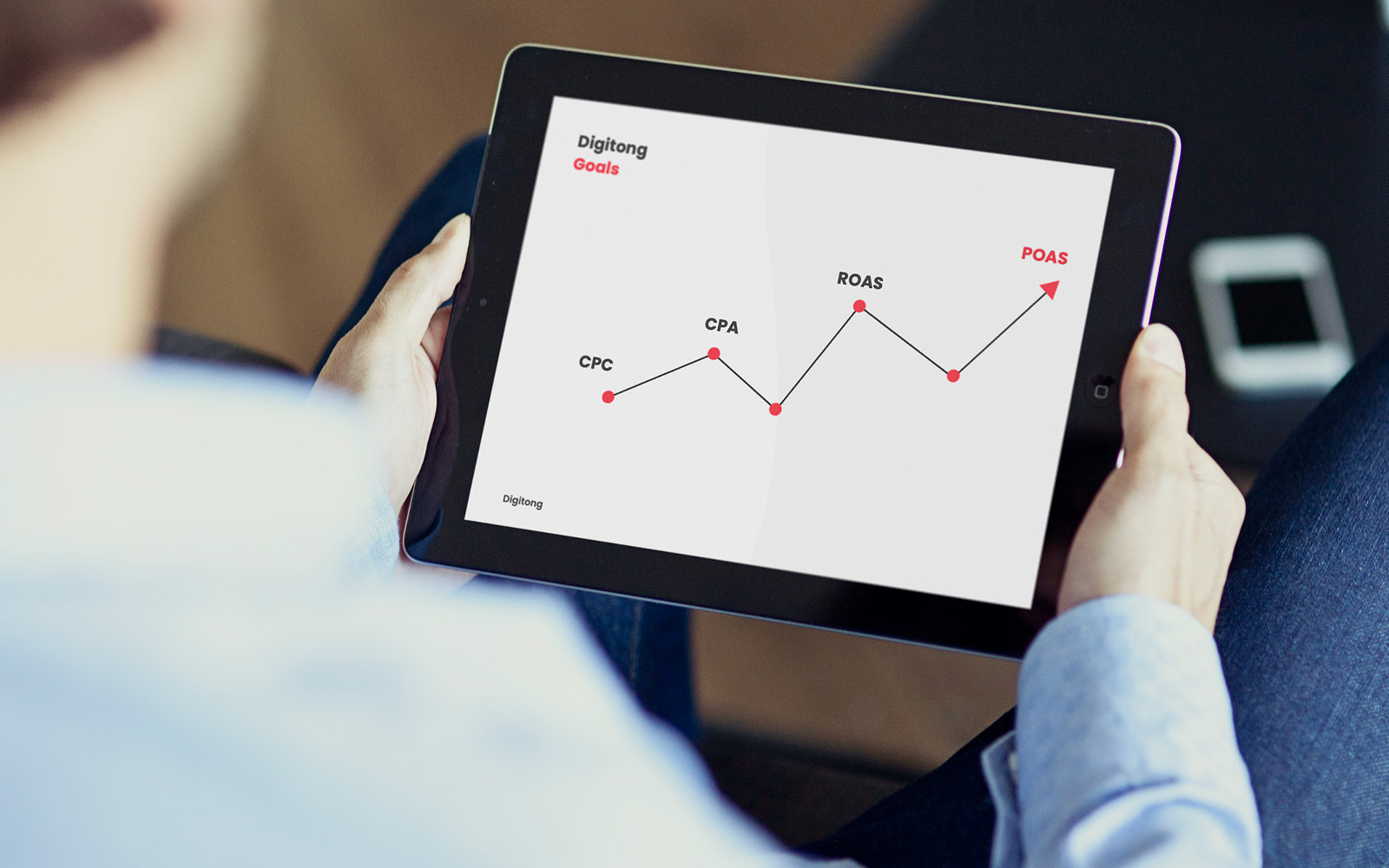The current challenge with tracking is that it has become unreliable, but that has always been technically true.
Meta (Facebook) Ads used to get too much credit (for certain scenarios). Now they get too little credit.
Google Ads overestimate their own value in certain scenarios and underestimate the value of top funnel keywords.
Google Analytics is a last-click lottery (so this has never been a good way to measure).
But it's all relative, right? If last year's ROAS was 500% and you have a 500% ROAS this year while your revenue is growing, you've grown, right? Wrong, and that's today's challenge. Tracking has become less reliable.
In some of our most stable cases over the years, we have seen a discrepancy between channel tracking and business metrics - such as Google Ads showing a decline in revenue, but business revenue still increasing.
That's a problem, because if you start reducing your marketing spend based on channel data without considering actual revenue, you're doing more harm than good.
The solution we've been using more and more in recent months is the metric of Revenue to Marketing spend. In this article, we call it Blended ROAS, but it's called a lot:
- Holistic ROAS
- Revenue to Marketing efficiency
Too much reliance on direct tracking
For years, we thought we could track the exact ROAS of online marketing initiatives. But actually, we know better. Direct tracking used to be more accurate than it is now (due to policy changes, GDPR etc), but it has never been 100% flawless.
So it is up to marketers to come up with alternatives, otherwise executives will continue to insist on the metrics they can actually measure and that will cause errors in analysis. So, in turn, that will also lead to mistakes in strategy.
As I mention later, it is the responsibility of the marketing team to dig deeper into the channel-specific activities that are harder to quantify, but they still need to be able to report the "cold numbers" down the chain.
The Alternative Metric: Blended ROAS
What exactly is this Blended ROAS? Blended ROAS is the total of all revenue divided by total marketing costs.
So how do you go about such a Blended ROAS? Let's take an example with the following figures:
800% ROAS in Google Ads
500% ROAS in Meta ads
400% ROAS in TikTok Ads
1700% ROAS on Organic Search
2000% ROAS on email marketing
Traditionally, you would look at the ROAS levels for each channel and assess whether they meet your definition of a profitable ROAS target - in this example, you need to achieve an average ROAS of 700% to be profitable.
The conclusion from this example is that you should reduce spending on Meta and TikTok when looking at performance for the individual channels.
Now let's approach this experiment with the Blended ROAS strategy. The above marketing mix delivers an average ROAS of 800% while meeting our revenue goals. In terms of profitability, we are fine here, yet we would like to make budget shifts to use the marketing mix in a different way. After all, you're still not achieving the targets you need to achieve at Meta & TikTok.
You should look beyond just that ROAS metric. For example, data analysis shows the following:
- Google Ads has an impression share of +90% on all relevant keywords/products.
- Meta Ads produce 40% of all email signups.
- TikTok only launched three months ago, but is producing 5x as many new customers as Google Ads.
- The business is based on Organic Search, and you've invested heavily in a large content universe over the past 5 years, and you're now seeing solid returns on that.
The conclusion you are going to draw from this is that Meta & TikTok did have an impact on the whole, because they contribute to the success of other channels.
We should not increase Google Ads further because there is not much more to get out of the channel. That last "10%" is not worth lowering our ROAS further.
Now that we have a great email marketing program, the lower ROAS in Facebook seems to be absorbed by the value of each email in subsequent months.
Even though the direct ROAS on TikTok is much lower than any other channel, it clearly allows us to reach a brand new audience and attract new customers on a much larger scale. Those customers, in turn, are going to earn us more in the long run.
Despite the much higher ROAS on organic Search, further investment in the channel is not the right move strategically, as we are still recouping the investment of previous years.
How is this way of thinking different from an average ROAS target of 800% that you need to meet in every single channel?
Ideally, every CMO and marketing manager should think this way about their marketing mix in an e-commerce company. But so often conversion relates to the individual channel reporting an arbitrary ROAS.
The competitive advantage of Blended ROAS
Imagine this scenario: Your blended ROAS target is 500%.
Google Ads achieves an ROAS of 400%. Blended ROAS is 600% with a total revenue of €100k.
You increase Google Ads spending as a result of having a higher blended ROAS that you achieve.
Then you achieve a channel-specific ROAS of 300% while the revenue remains unchanged when looking at the reported revenue in Google Ads. So this seemed like a bad move.
But let's revisit this with the Blended ROAS strategy in mind:
Blended ROAS drops to 500%, but total revenue increases to €130k. Even though Google Ads doesn't report it, your business numbers report it. So this was still a good move, though.
By not considering blended ROAS, you directly limit the potential of all your marketing channels, and the marketing managers working to maximize the channel.
Competitors still rely on channel data, so they wouldn't be able to run on such a "low ROAS." Imagine going to their agency or marketing team and saying "WHY are XYZ ALWAYS ABOVE US?".
But ... There are also drawbacks to a Blended ROAS strategy if it is not executed properly.
No blank check to simply increase ad spending
Let's build on the above scenario and identify a typical problem with the Blended ROAS strategy because:
Blended ROAS is not a blank check to ignore performance indicators.
If you took the above step, and increased email shipments in the same period, resulting in the €30k additional revenue that can be tracked - it wasn't because Google Ads caused the revenue increase; it was just more email marketing revenue.
Here's a nice reminder: Channel-specific data can still work as valid performance indicators - they're just not the overall source of truth.
Moving to Blended ROAS does not mean that you should only measure Blended ROAS. It is meant to be the main metric you use to measure your performance instead of faulty channel-specific tracking, but it is not meant to stand alone.
Therefore, reviewing and understanding your numbers on a weekly, monthly and quarterly basis is essential.
I think blended ROAS is something more marketers need to learn to work with as they try to find levers to maximize the efficiency of their marketing mix.
The time you save as automation takes over bidding and other grunt work should be invested in:
- Better strategy
- Being more creative
- Better data analysis
When excavators took over from people manually digging holes in the ground, we didn't just keep digging the same holes. We became more ambitious and could do more in less time.
The same goes for online marketing.
Conclusion
- Tracking is getting harder, so we need alternatives to assess marketing channels
- Over-reliance on channel tracking (FB Pixel, Google Conversion Tracking, etc.) can sometimes lead to incorrect attribution.
- As your business grows, you need to rely less on channel tracking and more on Blended ROAS.
- Blended ROAS provides a macro view of your total advertising costs versus revenue.
- Channel tracking becomes an indicator of performance rather than final truth




